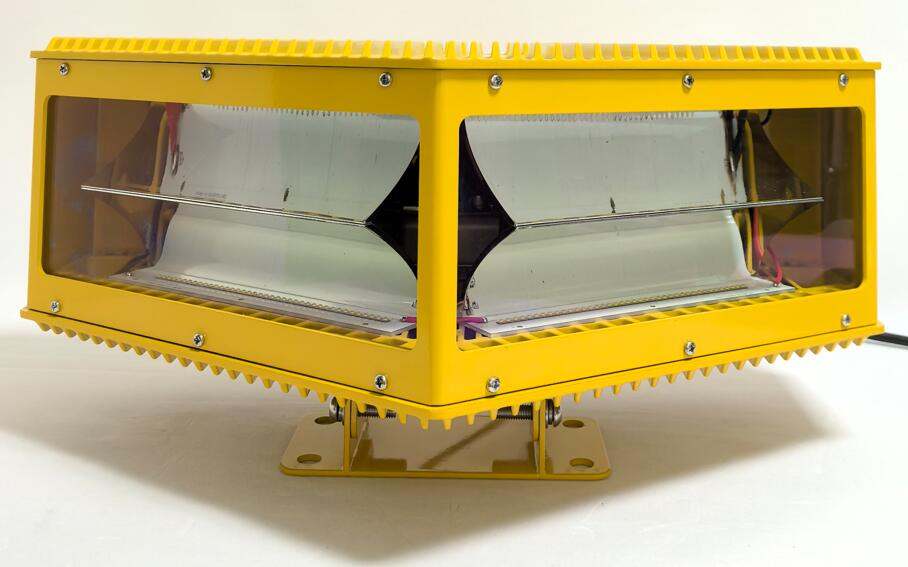Aviation Lights for Chimneys: Ensuring Safety in the Skies
Industrial chimneys, especially those near airports or in densely populated areas, pose a significant risk to low-flying aircraft. To mitigate this danger, aviation lights for chimneys are installed to enhance visibility and prevent collisions. These specialized lights are not just a regulatory requirement—they are a critical component of aviation safety. This article explores their importance, types, installation standards, and technological advancements.
Why Aviation Lights Are Essential for Chimneys
Chimneys, particularly those in power plants, refineries, and manufacturing facilities, can extend hundreds of feet into the air. Without proper lighting, they become hazardous obstacles for pilots, especially during nighttime or adverse weather conditions.

Key reasons why aviation lights for chimneys are indispensable:
Preventing Air Accidents – Unmarked chimneys can be invisible to pilots, increasing collision risks.
| aviation light for chimney |
Regulatory Compliance – Aviation authorities mandate lighting on tall structures to ensure airspace safety.
Enhancing Visibility in Poor Weather – Fog, rain, and darkness reduce visibility; aviation lights ensure chimneys remain detectable.
Protecting Low-Flying Aircraft – Helicopters, small planes, and emergency aircraft often fly at lower altitudes where chimneys pose a greater threat.
| aviation lights for chimney |
Types of Aviation Lights Used on Chimneys
Different lighting systems are used depending on the chimney’s height and location relative to flight paths. The main categories include:
1. Low-Intensity Aviation Lights
Used for chimneys under 45 meters (148 feet).
Typically red, steady-burning lights.
Common in urban areas with lower air traffic.
2. Medium-Intensity Aviation Lights
Required for chimneys between 45 and 150 meters (148–492 feet).
Can be red or white, flashing or steady.
Often used in industrial zones near regional airports.
3. High-Intensity Aviation Lights
Used for chimneys exceeding 150 meters (492 feet).
Bright white strobe lights for maximum visibility.
Essential near major airports or in high-altitude flight paths.
4. Dual Lighting Systems
Combine red lights for nighttime and white strobes for daytime.
Ensures 24/7 visibility under all lighting conditions.
Regulations Governing Aviation Lights for Chimneys
To maintain uniformity and safety, aviation authorities enforce strict guidelines for chimney lighting. Key regulatory bodies include:
ICAO (International Civil Aviation Organization) – Sets global standards for obstacle lighting.
FAA (Federal Aviation Administration, USA) – Defines requirements for structure heights and lighting.
EASA (European Union Aviation Safety Agency) – Oversees aviation safety regulations in Europe.
Common regulations include:
Minimum light intensity based on chimney height.
Proper spacing and placement of lights for optimal visibility.
Backup power systems to ensure continuous operation during outages.
Technological Advancements in Aviation Lighting
Modern aviation lights for chimneys incorporate advanced technologies to improve efficiency and reliability:
LED Lighting – More energy-efficient, longer lifespan, and brighter than traditional incandescent bulbs.
Solar-Powered Systems – Reduce dependency on electrical grids, ideal for remote industrial sites.
Smart Monitoring – Sensors detect failures and alert maintenance teams automatically.
Aircraft Detection Lighting Systems (ADLS) – Lights activate only when an aircraft is nearby, reducing light pollution.
Challenges and Future Trends
Despite their benefits, aviation lights for chimneys face challenges:
Light Pollution – Bright strobes can disturb nearby communities; ADLS and shielded designs help.
Maintenance Requirements – Regular inspections are necessary to ensure functionality.
Extreme Weather Resistance – Lights must endure high winds, storms, and temperature fluctuations.
Future trends may include:
AI-Powered Monitoring – Predictive maintenance using machine learning.
More Eco-Friendly Designs – Increased use of solar and low-energy lighting.
Improved Durability – Advanced materials to withstand harsh industrial environments.
Aviation lights for chimneys are a crucial element in aviation safety, ensuring that tall industrial structures do not become unseen hazards. With strict regulations and evolving technology, these lighting systems continue to improve, enhancing safety for pilots and the public alike. As industries expand and urban airspace becomes more crowded, the role of aviation lights for chimneys will only grow in importance, safeguarding both aircraft and infrastructure for years to come.
